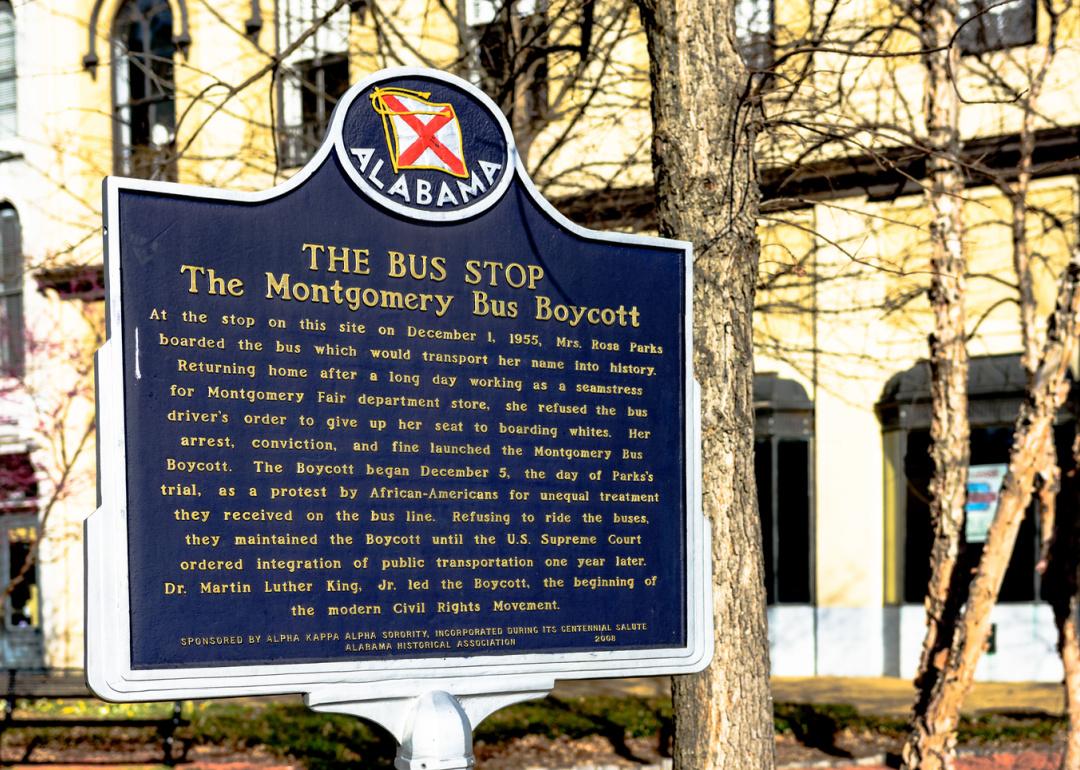
Explore historic sites commemorating Black history in Montana
Explore historic sites commemorating Black history in Montana
The legacies of influential Black Americans have not always been acknowledged, so it's not uncommon that modern-day residents may overlook the historic sites of their own cities.
While some historical Black figures in the U.S. are more well-known than others, there are in fact thousands of people dating back generations to 17th-century slavery who left traces of their visions and impacts all across the country. Whether prominent figures such as Robert Abbott, who founded one of the largest African American newspapers in the country, or more under-the-radar originators such as Obrey Wendell Hamlet, who cultivated unique vacation experiences in the Rocky Mountains, one thing's for certain: There is far more uncharted Black history in this country than charted.
Stacker identified historic sites commemorating Black history across 47 states, using the National Register of Historic Places. North Dakota, Vermont, Hawaii, and Wyoming did not have Black historic sites listed on the registry. While some states, especially in the South, are home to many sites central to the civil rights movement, Stacker listed the total sites in every state and the names of three historic sites where available. You can visit the full registry of 232 historic sites and explore the Civil Rights Trail to learn about additional locations across the U.S.
Read on to explore and learn about the historic sites celebrating Black history in your state, or read the national story here.
Montana by the numbers
- Sites commemorating Black history: 6 (1 with state significance, 0 with national significance)
- Shaffer's Chapel African Methodist Episcopal Church (Butte)
- Union Bethel African Methodist Episcopal Church (Great Falls)
- Samuel Lewis House (Bozeman)
Samuel Lewis House was the home of Samuel Lewis, a notable member of the Black community in Bozeman. Lewis was born in Haiti in 1835 and immigrated to the United States with his parents when he was a child. Lewis grew up in upstate New York, then moved to San Francisco, where he became a barber, and eventually settled in the city of Bozeman in 1868, where he opened a barbershop, worked as a miner, and built and rented out homes. In 1896, when Lewis died, his estate was worth $25,000, which at that time was considered a great fortune, making him one of Montana's wealthiest members of the Black community.
Continue reading to see which sites commemorate Black history in other states in your area.
Idaho
- Sites commemorating Black history: 2 (0 with state significance, 0 with national significance)
- St Paul Missionary Baptist Church (Boise)
- East Side Downtown Historic District (Pocatello)
The East Side Downtown Historic District saw developments as a multiethnic neighborhood as early as the 1880s due to railroad work opportunities. Ethnic businesses were doing well but by 1940, these businesses were seen as "undesirable." After World War II, the Pocatello Housing Authority alongside the Chamber of Commerce decided to rebuild the area for commercial use.
South Dakota
- Sites commemorating Black history: 1 (1 with state significance, 0 with national significance)
- Yankton Historic District (Yankton)
The Yankton Historic District is a walkable area consisting of many historic sites that people can see. The African Methodist Episcopal Church, for instance, dates back to the 1880s and was one of the premier Black churches in the region. The chapel still exists today and people can visit, however, regular church services are no longer offered.



